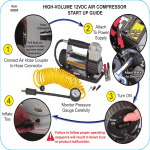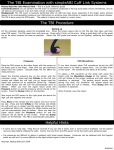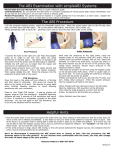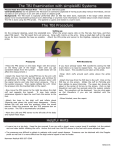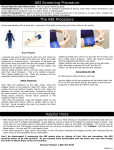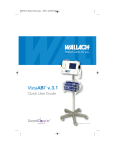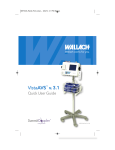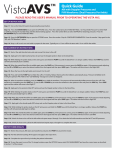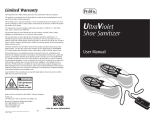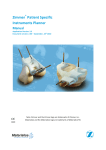Transcript
The ABI Examination with simpleABI Cuff Link Systems Please Read the User Manual first– This is a quick reference guide Contraindications: Do not perform the ABI exam on someone suspected of having acute deep venous thrombosis, and do not take an arm pressure in an arm with a shunt or dialysis graft. Patient Preparation: The patient should be relaxed in a supine position for 5-10 minutes in a warm room. Explain the examination to the patient. This is an ideal time to enter patient information The ABI Procedure Setting up • On the computer desktop screen, select the simpleABI reports icon. When the screen opens click on the File tab, then New, and then select the ABI report. Fill out the patient information, risk factors, ICD-9 codes, etc. •Wrap appropriate cuffs at each site. Attach the hoses from the Cuff Link Control Box to each cuff as shown above. The green connectors go to the arm cuffs and yellow to the ankles. •Brachial Pressure: Use the computer cursor and click on the site you would like to begin with, usually the right brachial. Place the Doppler probe at an angle to the skin over the radial artery. Use plenty of ultrasonic gel and slowly move the probe until the best signal is obtained. Press and hold Inflate on the Cuff Link remote and inflate the cuff until you no longer hear the signal, and continue for an additional 20 mmHg. Release the Inflate button and the cuff will automatically start to slowly deflate. When you hear the Doppler signal return press the Pressure button and it will be stored on the screen. Press the Dump button. •Leg Pressures and waveforms: Press Next on the remote and the system will move to the Dorsalis Pedis (DP) site. Take an ankle pressure using the Doppler probe on the dorsalis pedis artery on top of the foot. Inflate the cuff to occlude the artery in the same manner you did on the arm. (Press Inflate, press Pressure, press Dump). Now press Next and place the Doppler probe on the posterior tibial (PT) artery behind the inside ankle bone. Obtain the pressure by again pressing Inflate, then Pressure when the sound returns, and then Dump. • To obtain a PVR waveform at the ankle cuff, press the button with the waveform image on it on the remote. The cuff will inflate to the proper pressure and hold that while the waveform is obtained . The patient should remain still during the measurement; the waveform will appear about ten seconds after the cuff is inflated. Press Dump after the waveform is obtained. •Repeat the sequence for the other leg – press Next and the system will move to the left brachial location. • When finished, save the report. Helpful Hints • Hold the probe close to the end and support the probe with your hand resting on the patient so that the probe does not move as the cuff is inflated and deflated. It also helps to rest your hand on the patient to keep the probe in place. One of the keys to a successful exam is being able to keep the probe in place as you inflate and deflate. If it moves you will not be able to hear the Doppler sounds return and you will have to repeat the inflation. The “Cheater” will help with all these issues – be sure and fill it with plenty of gel. • If the ankle pressure is high, above 200 mmHg, or the cuff cannot obliterate the Doppler sounds, this indicates that the artery may be incompressible due to calcification. Don’t be discouraged if measuring the ABI seems slow or clumsy at first. Like any procedure, the ABI becomes easier to do with practice. As you become more comfortable with the exam, you may also change the order of above steps as fits your practice. Newman Medical 1-800-267-5549 NM0059A
